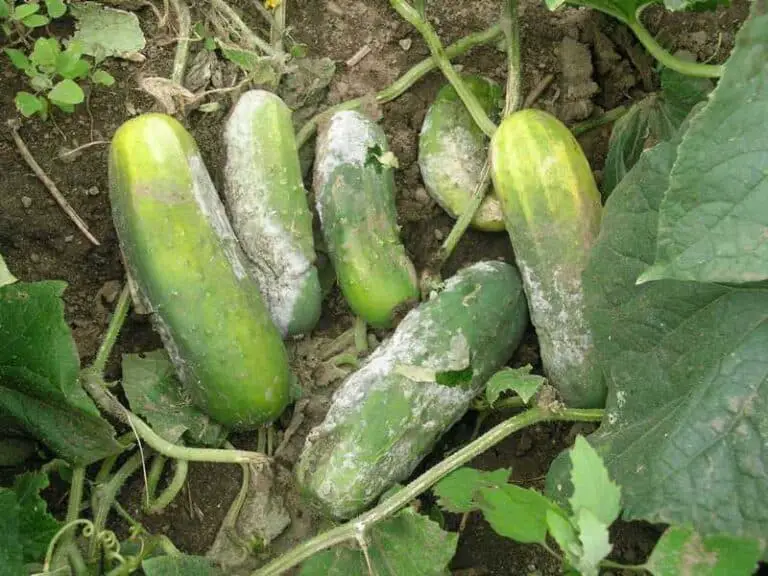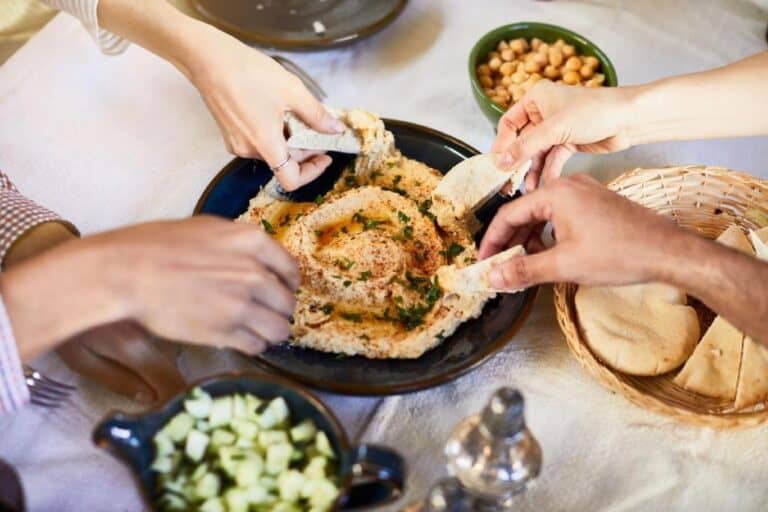Can You Eat Mangosteen Skin? Is Its Peel Edible and Safe to Eat?

Mangosteen, known as the “queen of fruits,” has captured the hearts and palates of many with its delicate sweetness and unique flavor. While the juicy white flesh is the star of the show, have you ever wondered about the edibility and safety of the vibrant purple mangosteen skin?
Could it possibly have secrets of its own that your palate is just waiting to discover? This journey delves into the age-old question, “Can you eat mangosteen skin?” Along with the captivating flavor and aroma, we’ll unveil the untold story of the peel’s nutritional potential, weigh the risks against the rewards, and even take a culinary adventure through inventive recipes.
In this article, we delve into the intriguing world of mangosteen peel, exploring its composition, historical uses, modern culinary applications, and safety considerations.
The Tempting Aroma and Taste of Mangosteen
Before we get to the peel, let’s savor the delightful experience of biting into a ripe mangosteen. Mangosteen, often referred to as the “Queen of Fruits,” has gained popularity not only for its taste but also for its potential health benefits.
Picture this: a plump, round fruit with a deep purple rind that hints at the flavors within. When you gently pry open the rind, a fragrant aroma escapes, tantalizing your senses. The ivory-white segments of the fruit glisten, promising a balance of sweetness and acidity that’s utterly satisfying.
The mangosteen (Garcinia mangostana) is a tropical fruit native to Southeast Asia, particularly countries like Indonesia, Malaysia, Thailand, and the Philippines. Its tough yet beautiful purple rind encases segments of luscious, juicy flesh.
Rich in vitamins, minerals, and antioxidants, mangosteen is celebrated for its potential health benefits. Notably, it’s lauded for its anti-inflammatory and immune-boosting properties.
Mangosteen Skin Composition and Properties
Now, let’s turn our attention to the mangosteen peel. The outer layer of the fruit is known for its vibrant purple color and slightly leathery texture. While the peel may not be the star attraction, it’s a significant part of the fruit. Traditionally, the peel has been utilized for various purposes, from herbal remedies to dyeing fabrics.
The mangosteen skin, or peel, holds more than just vibrant color; it contains a treasure trove of compounds. A detailed chemical analysis reveals the presence of nutrients, antioxidants, and bioactive compounds that contribute to the fruit’s overall health profile. These compounds include xanthones, tannins, and flavonoids, which are known for their potential to combat oxidative stress and promote well-being.
However, when it comes to consumption, opinions diverge. Some cultures and communities have embraced the idea of eating mangosteen peel, while others advise caution. Why the disparity? Let’s explore the potential reasons.
Nutritional Value of Mangosteen
The flesh of mangosteen is low in calories and rich in dietary fiber, vitamin C, and B-complex vitamins. Here’s a breakdown of some key components found in mangosteen peel:
| Component | Function |
| Dietary Fiber | Supports digestive health and promotes a feeling of fullness |
| Xanthones | Exhibits antioxidant and anti-inflammatory properties |
| Polyphenols | May contribute to overall well-being |
| Tannins | Can have astringent properties |
Potential Health Benefits of Consuming the Skin
Research suggests that the compounds found in mangosteen peel might have a positive impact on various aspects of health. Xanthones, in particular, have piqued the interest of scientists due to their potential anti-inflammatory, anti-cancer, and cardiovascular benefits.
The peel of mangosteen has been used in traditional medicine to treat skin infections and diarrhea. Additionally, the juice made from the mangosteen peel can make your skin feel tighter.
However, it’s essential to note that most of these studies have been conducted in vitro or on animals, and more research is needed to fully understand the effects on human health.
The Controversy: Can You Eat Mangosteen Skin?
Now, the pressing question is: Can you eat mangosteen skin? While some proponents of natural remedies and holistic approaches claim that the peel offers health benefits when consumed, others advise against eating it due to potential risks.
One concern revolves around pesticides. Fruits, including mangosteen, are often treated with pesticides to prevent damage from pests and disease. These chemicals can linger on the skin, raising questions about the safety of consuming the peel.
Another consideration is taste and texture. The mangosteen peel is considerably bitter compared to the luscious sweetness of the flesh. Chewing on the peel might not provide the most pleasant culinary experience, deterring many from including it in their diet.
The Texture and Taste of Mangosteen Skin
Mangosteen skin presents a stark contrast to the luscious fruit it protects. Its texture is best described as slightly leathery, forming a robust barrier that shields the delicate pulp within. When you touch it, you’ll notice a firmness that yields ever so slightly to the pressure of your fingers. This unique texture serves as a testament to nature’s ingenious design, ensuring the fruit remains well-guarded until it’s ready to be enjoyed.
In terms of taste, mangosteen skin surprises the palate with its bitterness, a striking counterpoint to the sweet and tangy explosion of flavors found in the flesh. The initial taste is often astringent, leaving a subtle, lingering bitterness on your tongue.
It’s this very contrast in flavors that makes mangosteen a truly exceptional fruit. While the skin may not be the star of the show, it plays a crucial supporting role in the overall gastronomic experience, offering a tantalizing hint of complexity to the fruit’s profile. So, when you savor a ripe mangosteen, take a moment to appreciate how its skin’s texture and taste contribute to the symphony of sensations that make it a culinary treasure.
Safety Concerns: To Eat or Not to Eat the Skin
The question of whether mangosteen skin is safe to eat arises due to concerns about potential toxins, allergens, or harmful compounds. While the skin is not considered toxic, it is thicker and more bitter than the fruit’s flesh, making it less palatable.
There have been rare reports of adverse reactions, mainly linked to allergies. If you have a history of allergies or sensitivities, it’s advisable to exercise caution when consuming the skin.
If you’re tempted to experiment with eating mangosteen peel, here are some safety precautions and creative ideas to keep in mind:
- Wash Thoroughly: If you decide to consume the peel, make sure to wash it thoroughly to remove any potential pesticide residues or contaminants.
- Cooking and Infusing: Some culinary enthusiasts have explored using mangosteen peel in cooking and infusions. It can be added to sauces, teas, or even candied for a unique twist.
- Allergic Reactions: As with any new food, be mindful of potential allergic reactions. If you’ve never consumed mangosteen peel before, it’s a good idea to take a small amount and observe how your body reacts.
- Moderation: If you do decide to include the peel in your diet, remember that moderation is key. Excessive consumption could lead to digestive discomfort due to its higher fiber content.
How Is Mangosteen Skin Traditionally Consumed?
The skin is dried, ground into a fine powder, and then used as a key ingredient in various herbal concoctions. Its natural compounds are believed to possess medicinal properties, aiding in the treatment of ailments like diarrhea, dysentery, and even skin infections. The skin’s astringent qualities make it a valuable resource in traditional medicine, offering relief to those seeking natural remedies.
Moreover, mangosteen skin contributes to the vibrant world of dyes. Its deep, earthy hues have been harnessed for centuries to color fabrics and crafts. The process involves boiling the skin, extracting its pigments, and then immersing materials like silk and cotton to achieve stunning shades of brown and black. This sustainable and eco-friendly practice showcases the ingenuity of traditional artisans who found beauty in nature’s offerings.
Beyond its utilitarian uses, mangosteen skin offers a culinary adventure. It is infused into teas, imparting a subtle bitterness that complements the sweet notes of the fruit’s flesh. Additionally, it finds its way into sauces, providing a unique depth of flavor.
Whether it’s the healing touch of herbal remedies, the artistry of natural dyes, or the culinary delight it adds, mangosteen skin proves itself as a versatile and culturally significant element in traditional practices.
Read: Can You Eat Lychee Skin?
Modern Culinary Uses of Mangosteen Skin
As culinary creativity evolves, so do the ways we enjoy mangosteen. Contemporary chefs and home cooks alike are finding innovative ways to incorporate mangosteen skin into their creations. From infused beverages and sauces to pickles and candies, the culinary world is embracing this underutilized component. This modern exploration of mangosteen skin adds a layer of complexity to dishes and highlights its potential to tantalize taste buds.
Extraction and Utilization of Mangosteen Skin Compounds
Beyond the realm of consumption, the mangosteen peel has caught the attention of researchers and industries alike. Methods to extract bioactive compounds from the peel, like xanthones, are being explored. These compounds aren’t just flavor enhancers; they hold promise in various sectors.
The reach of mangosteen peel’s compounds stretches far and wide. From the food industry’s hunt for natural additives to the pharmaceutical realm’s quest for novel drugs, these compounds have versatile potential. Even cosmetics benefit from the skin’s touch, as these compounds can lend their magic to skincare products.
The exploration of mangosteen peel’s compounds is an ongoing journey. Researchers are delving deeper into understanding their properties and applications. The results could reshape how we perceive not just mangosteen, but also the potential of food waste utilization.
Conclusion
Mangosteen is a fruit that is rich in nutrients and antioxidants. While the flesh of the fruit is commonly consumed, the peel of the fruit is not edible. However, the peel of mangosteen has been used in traditional medicine to treat skin infections and diarrhea.
In conclusion, while the main attraction of mangosteen remains its succulent flesh, the peel offers a range of possibilities worth exploring. With its rich composition of nutrients and potential health benefits, mangosteen skin is indeed edible.
Recent scientific studies suggest that the fruit possesses strong antioxidant, anti-cancer, anti-inflammatory, and antimicrobial properties. The peel of mangosteen is a good source of natural phenolic antioxidants. To extract the health benefits of mangosteen, the fruit can be consumed fresh or in the form of juice.
However, personal preferences, cultural traditions, and safety considerations play a role in whether you choose to incorporate it into your culinary repertoire. As with any new addition to your diet, it’s wise to listen to your body and consult a healthcare professional if you have concerns.
FAQs on Mangosteen Peel Consumption
What nutrients are found in mangosteen peel?
Mangosteen peel contains dietary fiber, xanthones, polyphenols, and tannins, contributing to potential health benefits.
Can you use mangosteen skin for health benefits?
Yes, mangosteen peel contains compounds like xanthones, known for their antioxidant and anti-inflammatory properties, offering potential health advantages.
Are there any potential side effects to eating mangosteen skin?
Excessive consumption might lead to digestive discomfort due to its higher fiber content. Some may find its bitterness unpalatable.
Can eating mangosteen skin be harmful to health?
While mangosteen skin has potential benefits, consuming it may expose you to pesticide residues and its bitter taste.
Can you consume mangosteen skin raw, or does it require cooking?
Mangosteen skin can be consumed raw, but its bitterness might make it more suitable for cooking or infusions.
Are there any medical conditions that eating mangosteen skin might aggravate?
Individuals with sensitivities to certain compounds in the peel or those prone to digestive issues may experience discomfort.






